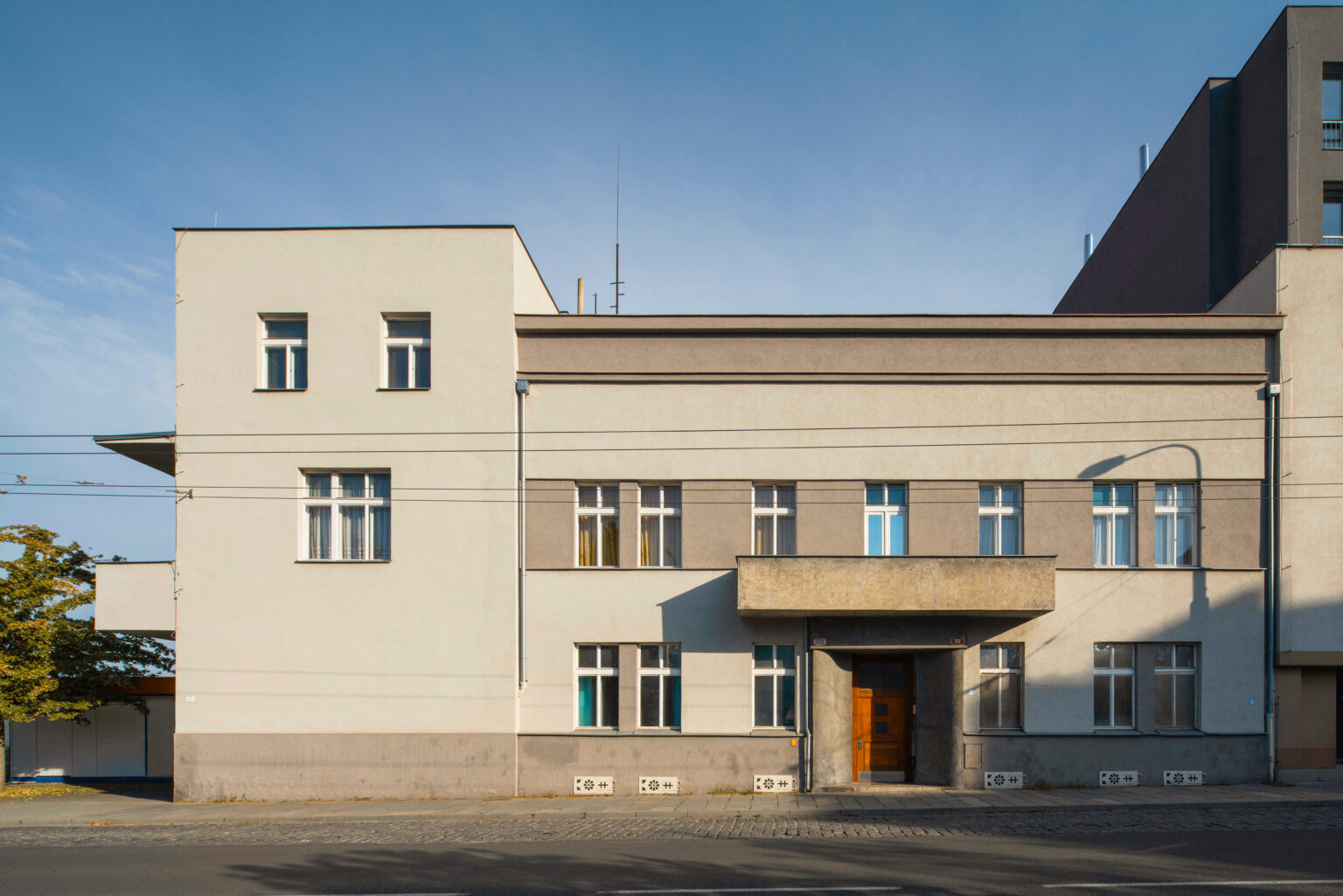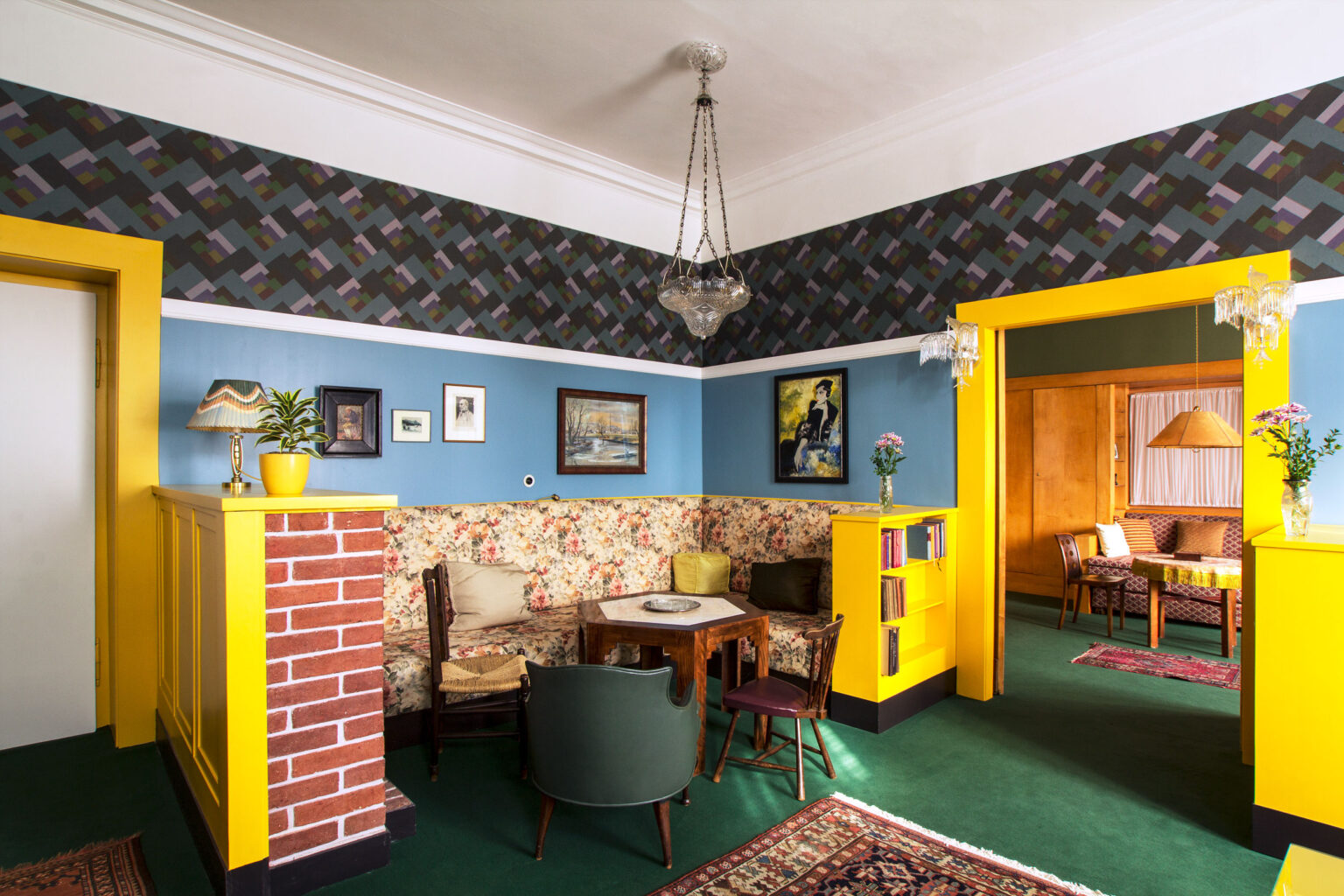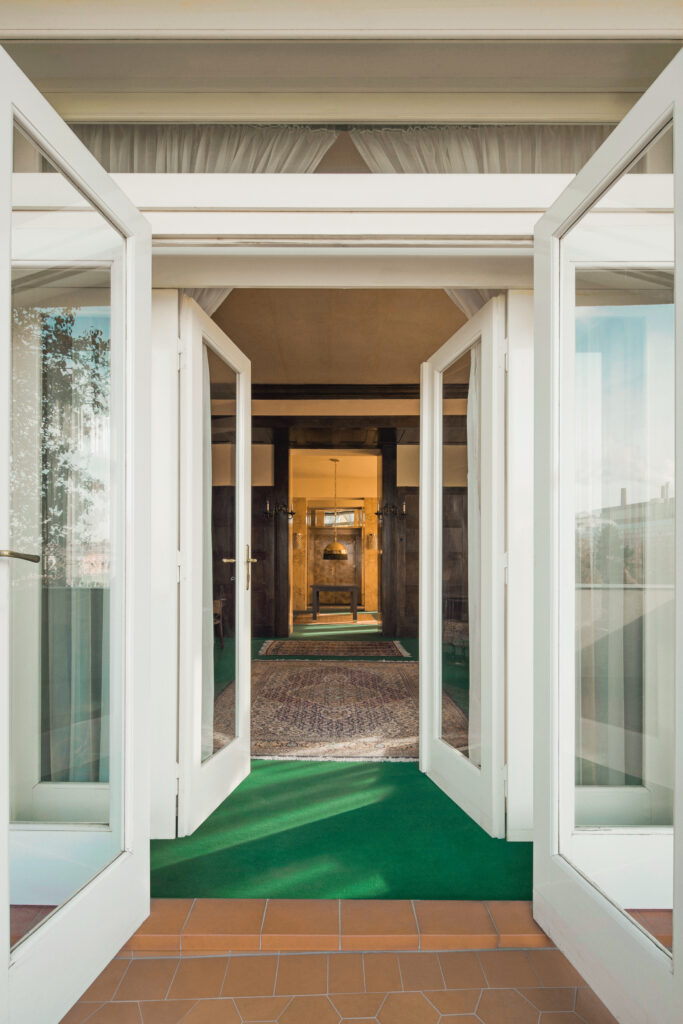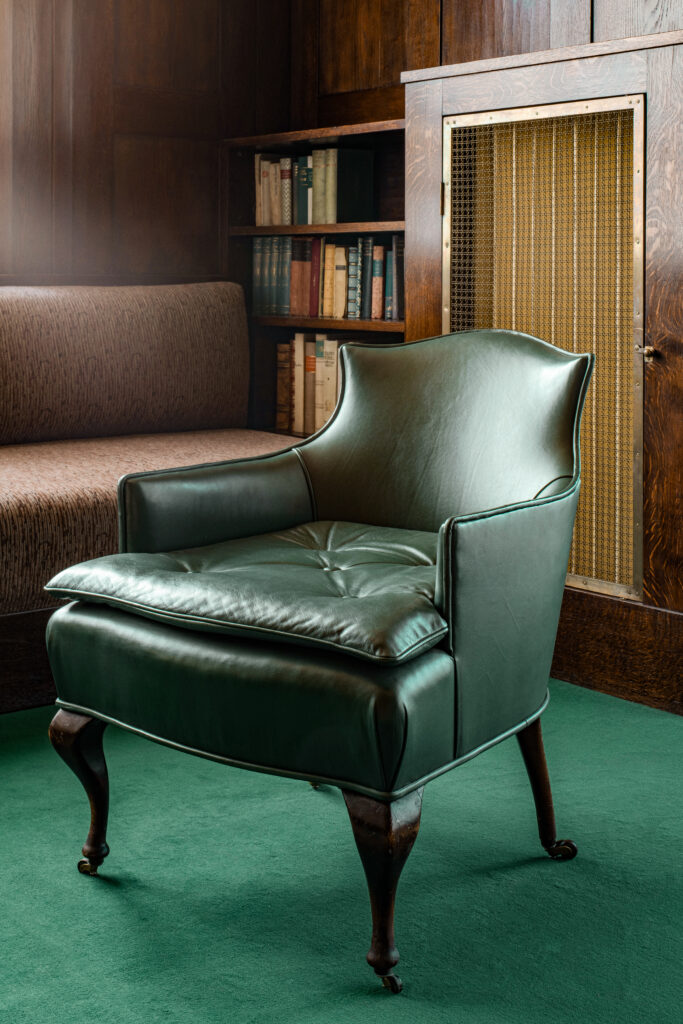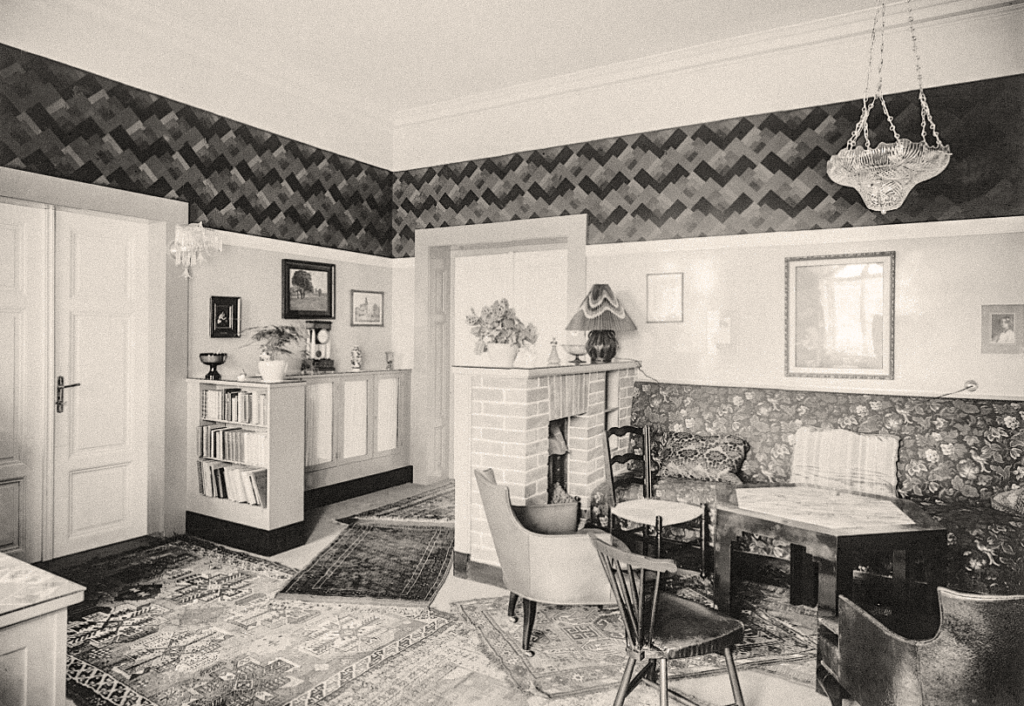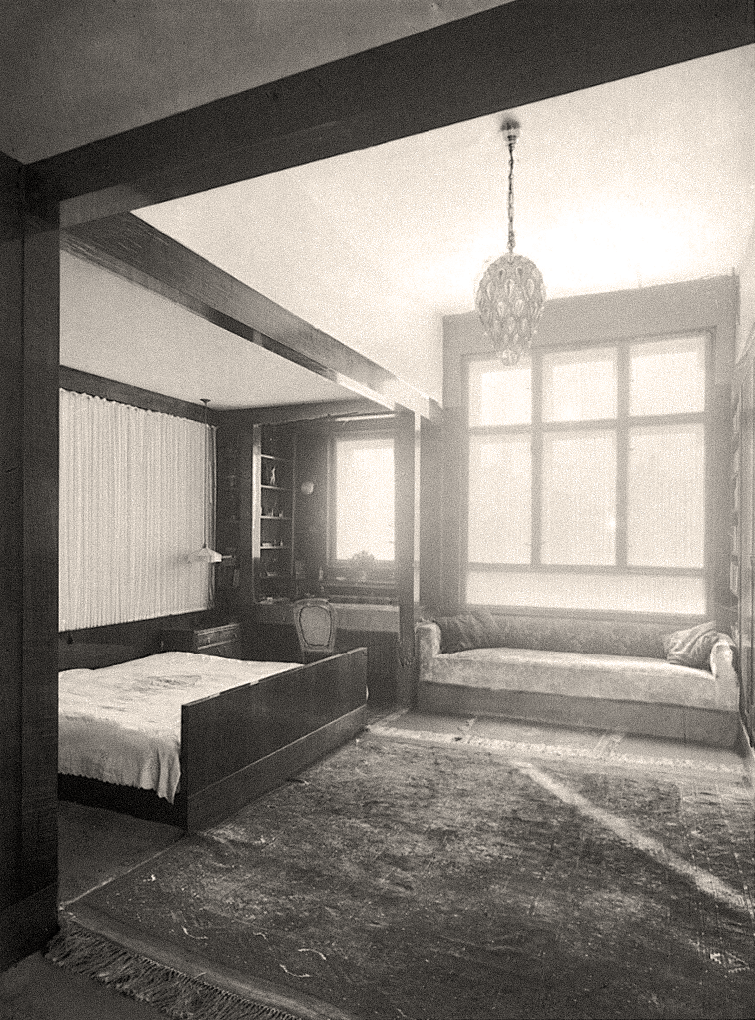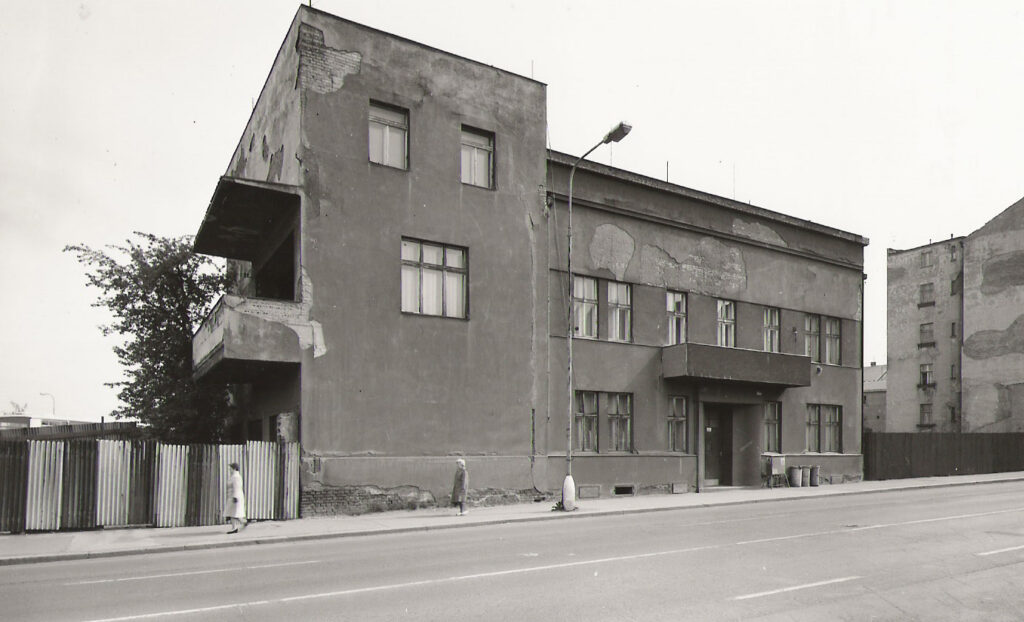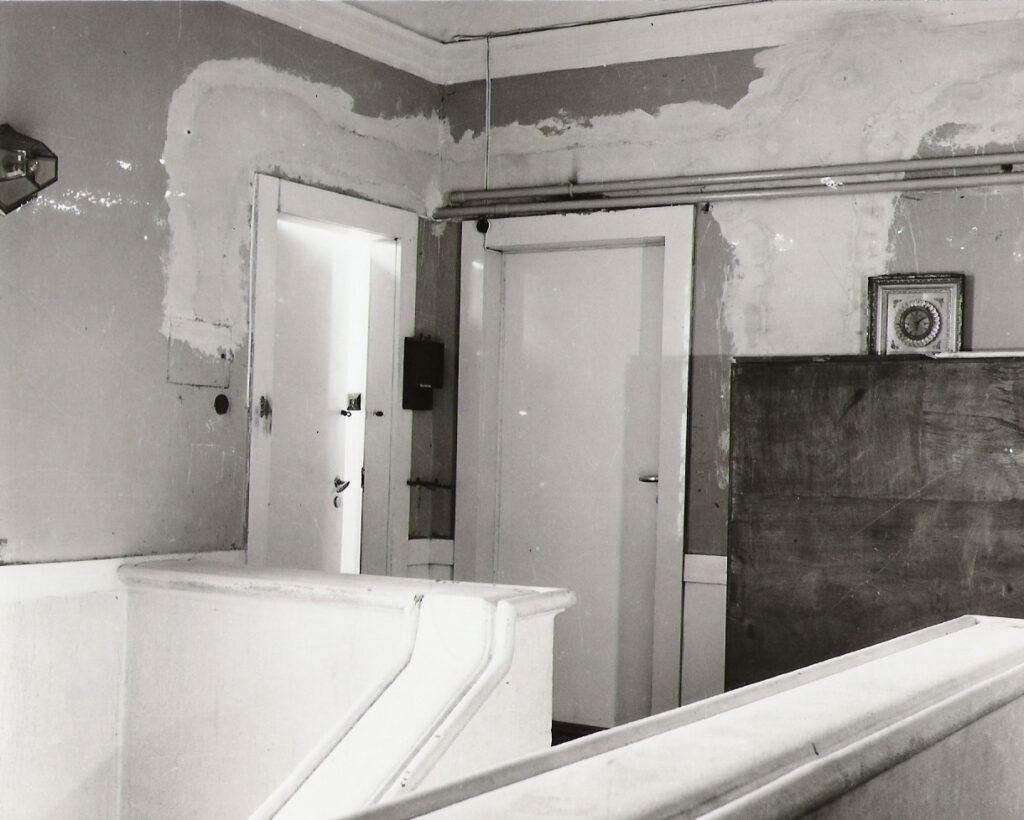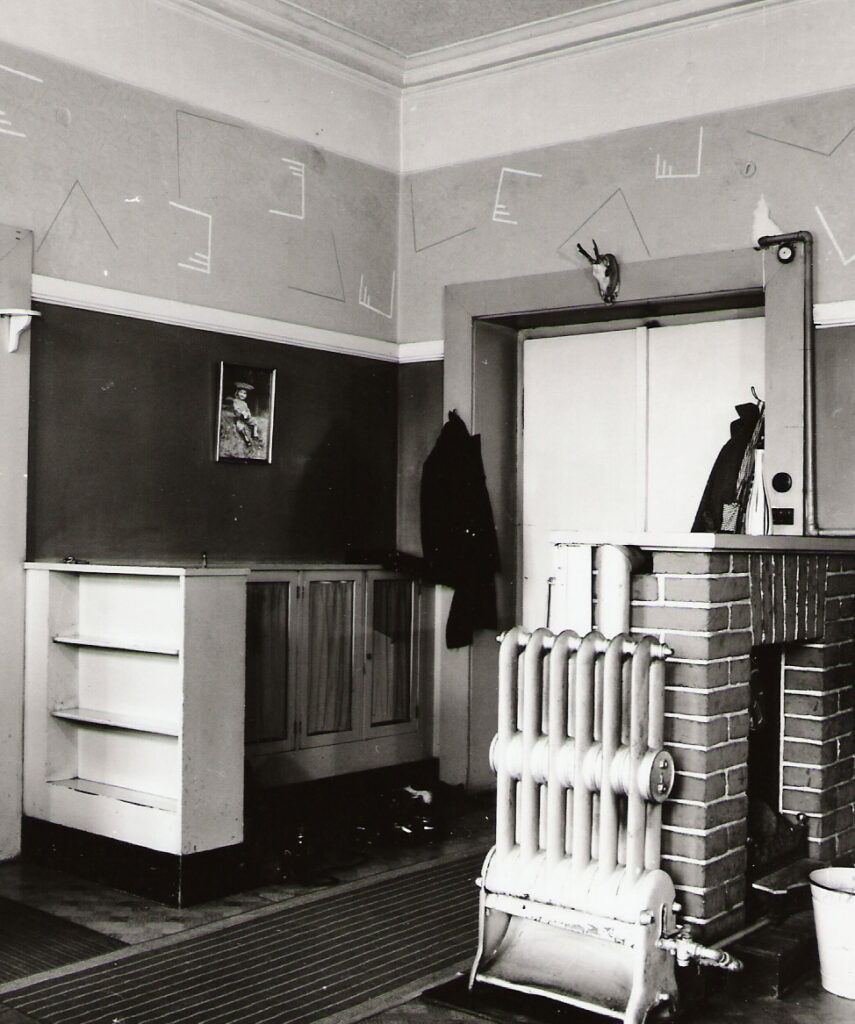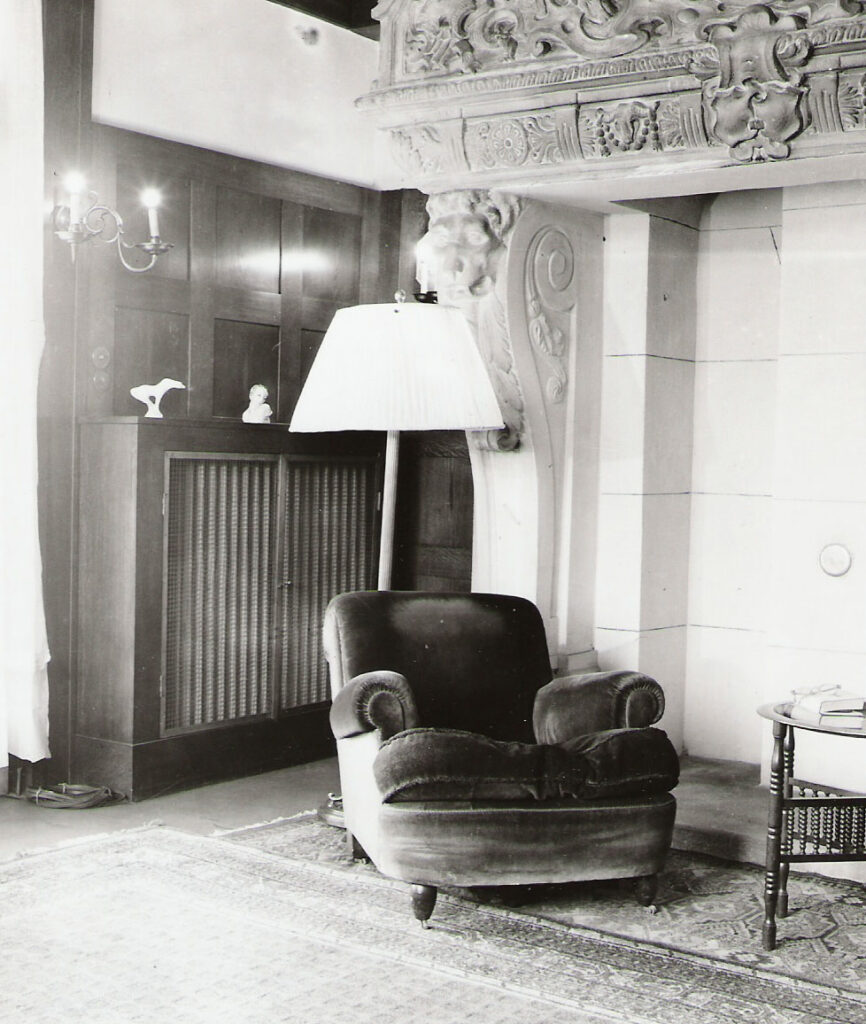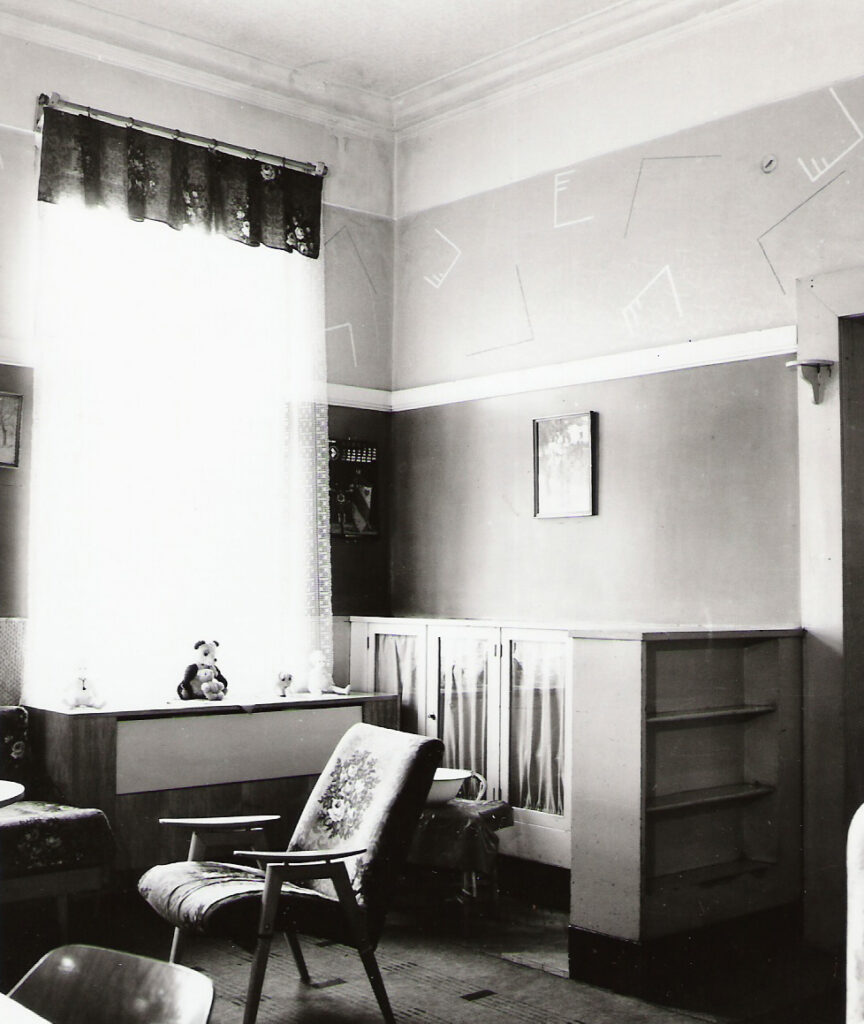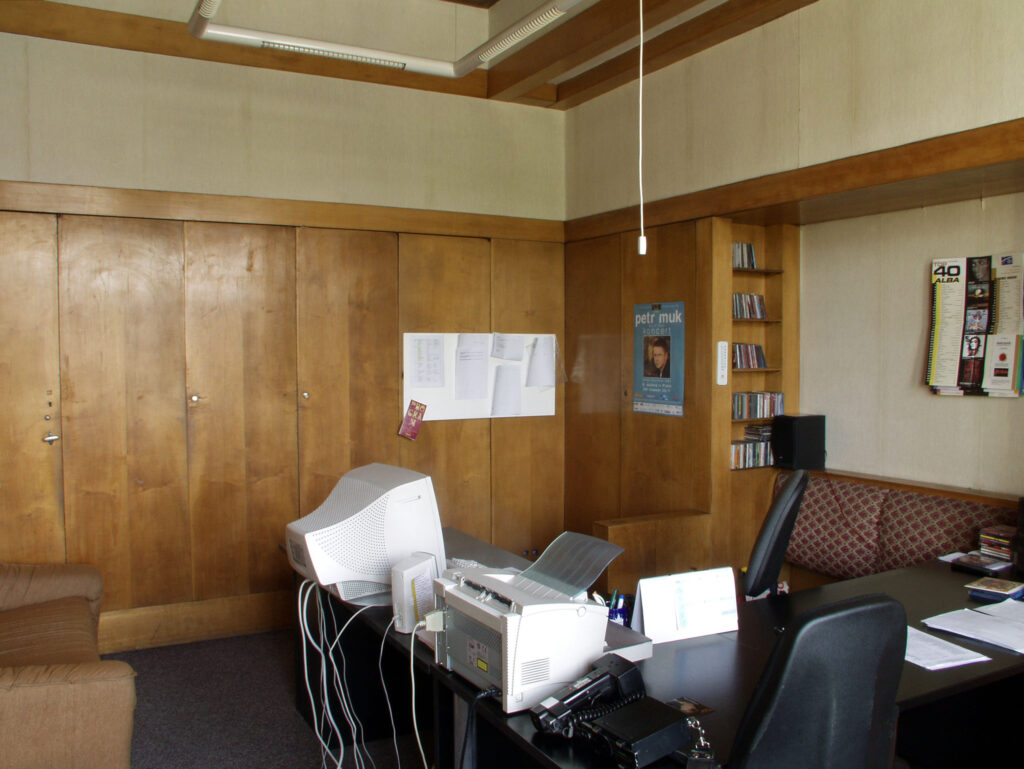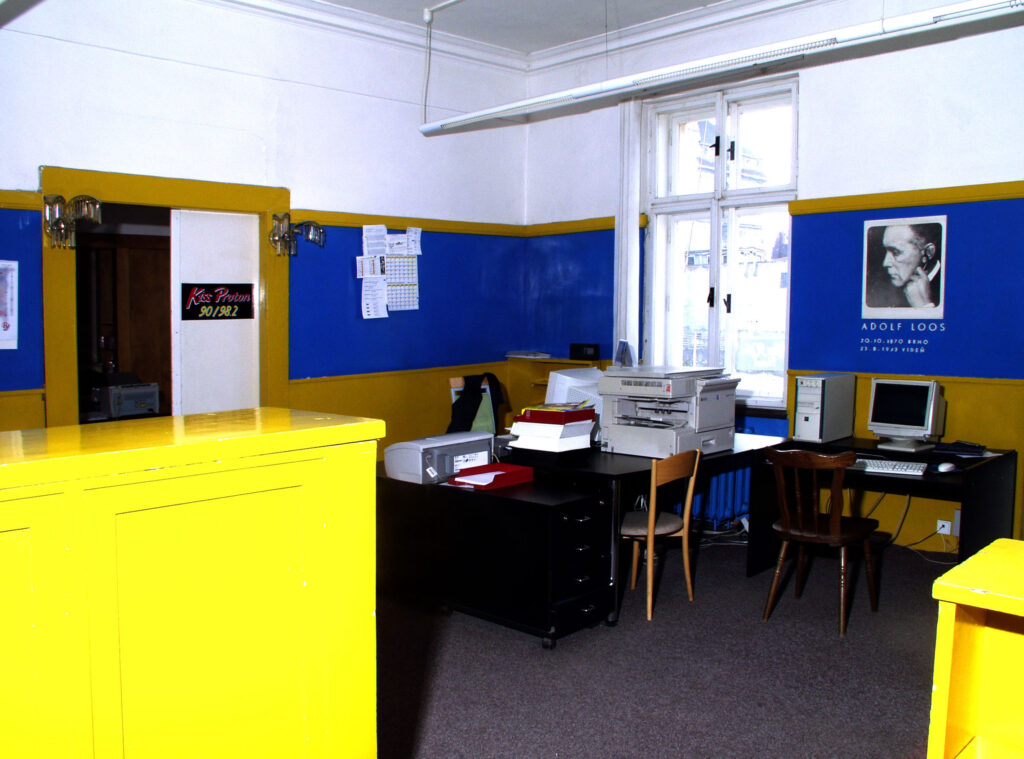History of the house
Adolf Loos
Karel Lhota
Loos invited his pupil, architect Karel Lhota, to collaborate on the reconstruction of the original Brummel villa.
He collaborated with him on a number of other projects, especially on the villa of František and Milada Müller in Prague’s Střešovice and later on the villa of Jenny and Josef Winternitz in Smíchov.
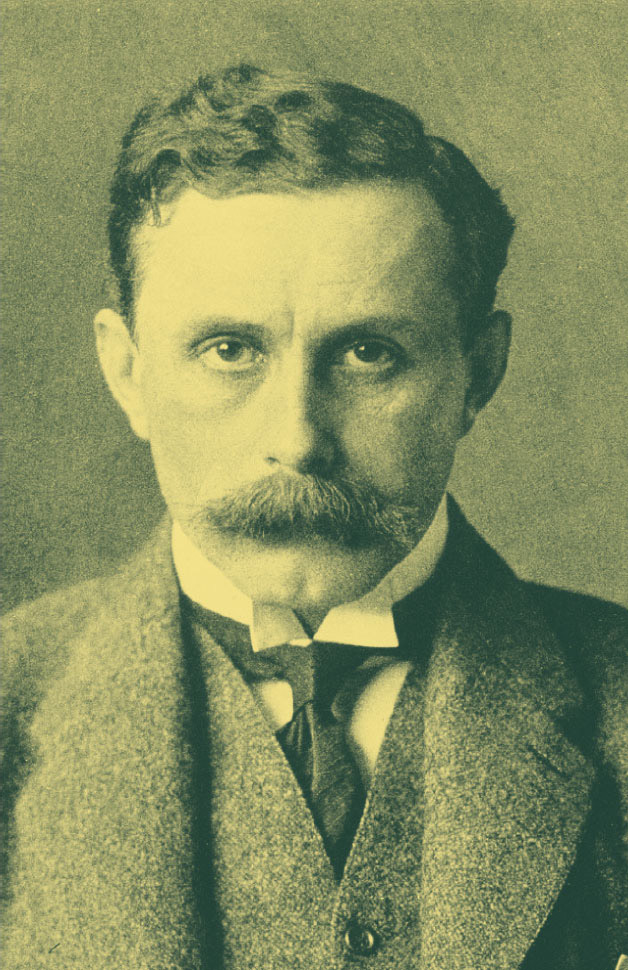

Jana and Jan Brummel
Hedvika Liebsteinová
The original house from 1886 was purchased by the Liebsteins in 1907 as a residence for their family and lumber business.
After the death of Vilém Liebstein, his son-in-law Jan Brummel, the husband of his younger daughter Jana, took over the shop and decided to rebuild and modernise the house.
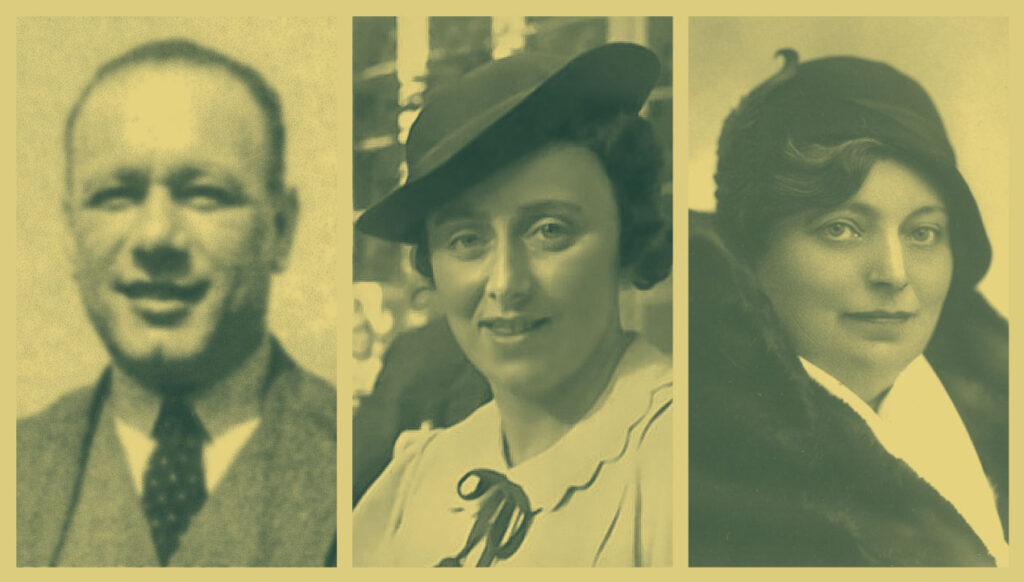
Loos House
Mr and Mrs Brummel knew Loos from Vienna, they also knew the apartment he had designed for the Hirsch family in Plachého Street in Pilsen, which they liked very much, and they decided to ask Loos to rebuild their family house in Husova Street in a similar style. Loos accepted this commission and rebuilt this originally one-storey house with a gabled roof and historicizing facade, built in 1886 by the Pilsen builder Eduard Kroha, into a modernist villa with a two-generation apartment on the first floor.
Adolf Loos found in Jan Brummel a common predilection for wood, which he developed into the often contrasting solutions of the individual rooms. The architect designed the mother’s living room with yellow lacquered softwood and pale blue lining, while for the dining room the architect chose noble wood from dark yellow Canadian poplar rootwood in combination with Robert Aigner’s large fresco “View of the Italian Landscape”. The living room is lined with stained dark oak and a stunning fireplace, made by the Viennese firm of F. O. Schmidt as a replica of a Renaissance fireplace from Nancy.
The master bedroom is designed in a warm cherry wood tone with a white ceiling with a decorative large glass drop-shaped chandelier hanging in the middle. Hedvika Liebstein’s bedroom, which is ingeniously equipped with built-in wardrobes and a sofa bed, is a decadent colour harmony of light ash wood and textiles reminiscent of the luxurious train compartments of its time.
The house as a work of art
Several important artists of the 20th century were associated with the house. century. For the entrance hall, Loos commissioned a portrait of Hedwig Liebstein by the young Hungarian painter Kalmán Kemény, then working in Pilsen and later in London. This portrait is now owned by the National Gallery in Prague.
The aforementioned Robert Aigner, the author of the fresco in the dining room, worked in Vienna, where he also created many decorative public commissions, especially after the Second World War. World War II. Jan Brummel’s cousin, the versatile visual artist Edita Hirsch, often stayed in the house. She worked in Prague as a portrait painter, but also as a fashion designer and cartoonist, publishing in the Prague and international press. For example, she regularly contributed illustrations from the 1937 World Exhibition in Paris to Prague’s “Pestrý týden”, and created the popular character of Winkle the dog for an English newspaper.
In 1934, she moved to Paris, where she was part of a cosmopolitan group of artists known as the Paris School. At the time of the occupation of Paris, she was active in the surrealist group La Main a plume (The Hand with the Pen).In 1942, she was arrested and deported to the Auschwitz concentration camp, where she was murdered immediately upon arrival. The house commemorates this promising artist with several originals and copies.
The rise of Nazism
The history of the house faithfully reflects the history of Europe in the 1920s. century. In 1939, the house and the adjacent lumberyard passed into German hands and the family was forced to move to 2. floor. At that time, the spiral staircase leading from the entrance hall to 2. floor and flat roof.
In 1942, the family members were deported to the Terezín concentration camp, where Hedvika Liebstein died in 1943.The Brummels went through several concentration camps separately and lived to see the end of the war under dramatic circumstances.
Jan and Jana Brummel returned to the house, whose interior was preserved unchanged, in October 1945. This was made possible by an unlikely confluence of favourable circumstances. The house survived the devastating Allied air raid on the immediately adjacent Skoda Works in April 1945 and the German owner left the house before the air raid, leaving everything in the house unchanged.
The heavy blows of socialism
After the communist takeover in 1948, the house was gradually destroyed, both by the necessity of introducing local heating in individual rooms and by the division of the apartment and the move-in of new tenants who had to use the rooms for purposes for which they were not originally intended. In 1962, the house became the property of the state and the Architects’ Club began to use the house.
The house, which at that time was in a very bad condition, was saved and rebuilt for the needs of the club by modifications according to the project of the architect Straňák. The project, however, corresponded to the investor’s ideas and material possibilities at the time and in many cases insensitively interfered with Loos’s original conception of the interior.
Although the interior was declared a cultural monument in 1969, thanks to the work of Věra Běhalová, a historian and at that time an employee of the National Heritage Institute, the house was threatened with complete destruction in the late 1970s in connection with the construction of the bus station.
Fortunately, however, thanks to the efforts of the Architects’ Club, the tenants, and other citizens from Pilsen and abroad (Steven E. Brummel from New York intervened with the Czechoslovak ICOMOS delegate), the house was saved.
Retrieved from
In 1991 the house was returned to the family in restitution proceedings and in 2001 a project for its restoration was prepared by Prof. Václav Girsa and arch. Miloslav Hanzl. Until then, the house had been rented to an internet company and Kiss Proton radio, which broadcast directly from the house.
In 2003, an international symposium “Adolf Loos | Work and Reconstruction” was held in Pilsen, which concluded with the publication of the so-called. “Pilsen Memorandum”. It stated that Loos’s Pilsen interiors belong to the cornerstones of modern world architecture and are an unforgettable part of European cultural heritage. It appealed to the responsible institutions of the city, the region and the state to consistently support the protection of these monuments and urged the owners of these monuments to respect their values.
The restoration work according to the project of Prof. Girsa was carried out with significant support from the City of Pilsen, the Pilsen Region and the Ministry of Culture of the Czech Republic from 2001 until 2015, when the house was opened to the public.
